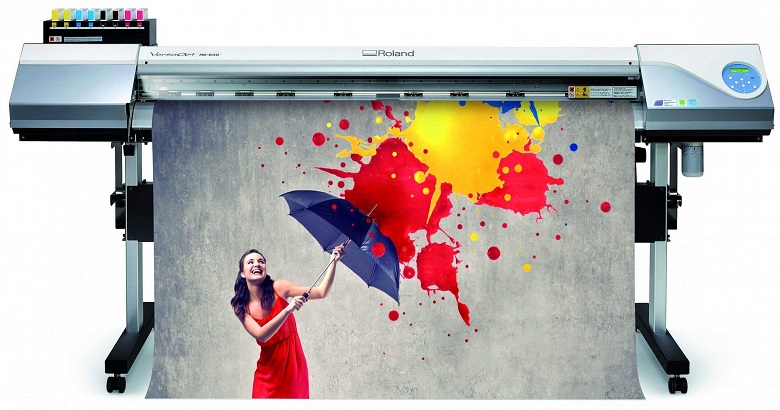The publishing world is constantly evolving, driven by technological advancements, shifts in consumer behavior, and global market dynamics. Understanding how publishers print their books today requires examining the various methods, technologies, and trends shaping the industry. This blog post delves into the intricate process of book printing, exploring the traditional and modern techniques publishers use to bring stories to life.
The Traditional Printing Process
Letterpress Printing
Letterpress printing is one of the oldest printing methods. It involves pressing inked, raised letters onto paper. Although largely obsolete for mass production, this method is still appreciated for its aesthetic quality and is used for special editions and art books.
Offset Printing
Offset printing is the most common traditional printing method used by publishers. This process involves transferring an inked image from a plate to a rubber blanket and then onto the paper. The key advantages of offset printing include:
- High Quality: Produces clear and sharp images with consistent quality.
- Cost-Effective for Large Runs: Economies of scale make it affordable for printing large quantities.
- Versatility: Suitable for a wide range of printing materials, including books, magazines, and brochures.
The Rise of Digital Printing
On-Demand Printing
Digital printing has revolutionized the publishing industry, particularly with the advent of print-on-demand (POD) services. POD allows publishers to print books as orders are received, reducing the need for large print runs and minimizing inventory costs. Key benefits include:
- Reduced Waste: Only the number of books needed are printed, minimizing unsold inventory.
- Faster Turnaround: Books can be printed and shipped quickly, often within days.
- Customization: Allows for easy updates and personalized editions.
Short-Run Printing
Digital printing is also ideal for short-run printing, where publishers print a small quantity of books. This method is particularly useful for niche markets, self-published authors, and special projects.
Technological Advancements in Printing
Inkjet and Laser Printing
Modern digital printing relies heavily on advanced inkjet and laser printing technologies. These methods offer high-quality prints and are suitable for both color and black-and-white books. Innovations in these technologies have enhanced print speed, quality, and efficiency, making them competitive with traditional offset printing for certain applications.
3D Printing
Although still in its infancy in the publishing world, 3D printing holds the potential for creating unique, tactile experiences with books. This technology can be used to produce intricate book covers and other design elements, offering a new dimension to book production.
Sustainable Publishing Practices
Eco-Friendly Materials
With growing environmental concerns, publishers are increasingly adopting sustainable practices. This includes using recycled paper, soy-based inks, and eco-friendly binding materials. These efforts help reduce the environmental footprint of book production and appeal to environmentally conscious consumers.
Print-on-Demand and Sustainability
Print-on-demand (POD) also contributes to sustainability by reducing waste and overproduction. By printing only what is needed, publishers can significantly decrease their carbon footprint and minimize the use of resources.
Carbon-Neutral Printing
Some publishers are committed to carbon-neutral printing practices. This involves offsetting the carbon emissions generated during the printing process through various means, such as investing in renewable energy projects or reforestation initiatives.
The Globalization of Publishing
International Printing Hubs
Globalization has led publishers to seek cost-effective printing solutions worldwide. Countries like China, India, and Poland have become major printing hubs due to their advanced printing facilities and lower production costs. These regions offer high-quality printing services that cater to international publishers.
Cross-Border Collaboration
The global nature of publishing has fostered cross-border collaboration among publishers, printers, and distributors. This interconnectedness allows for the efficient production and distribution of books on a worldwide scale, ensuring that titles can reach diverse markets quickly and cost-effectively.
The Future of Book Printing
Hybrid Publishing Models
The future of book printing may lie in hybrid publishing models that combine traditional and digital methods. Publishers can leverage the strengths of both approaches to optimize production, reduce costs, and meet the demands of different markets.
Technological Integration
Continued advancements in technology will further shape the printing landscape. Innovations such as artificial intelligence, machine learning, and automation are expected to enhance the efficiency and quality of book production. For instance, AI can be used to optimize print layouts, predict demand, and manage inventory more effectively.
Personalization and Customization
As consumer preferences evolve, there is an increasing demand for personalized and customized books. Digital printing technologies make it feasible to produce customized editions tailored to individual preferences, whether it’s a personalized cover, specific content, or unique formatting.
Challenges in the Publishing Industry
Cost Management
One of the primary challenges publishers face is managing costs while maintaining high-quality production. Balancing the expenses associated with traditional printing methods and the flexibility of digital printing requires strategic planning and resource allocation.
Piracy and Intellectual Property
The digital age has also brought challenges related to piracy and intellectual property rights. Publishers must implement robust measures to protect their content and ensure that authors are fairly compensated for their work.
Market Saturation
With the rise of self-publishing and digital platforms, the market is becoming increasingly saturated. Publishers need to find ways to stand out and attract readers in a crowded marketplace. This includes focusing on quality, marketing, and leveraging unique selling points.
Wrapping Up
The landscape of book printing is a dynamic and evolving field, influenced by technological advancements, sustainability efforts, and global market trends. From traditional offset printing to cutting-edge digital and 3D printing technologies, publishers have a variety of tools at their disposal to produce high-quality books efficiently. As the industry continues to adapt to changing consumer preferences and environmental concerns, the future of book printing promises to be both innovative and sustainable. Understanding these global publishing trends provides valuable insights into how publishers print their books and the direction the industry is heading.
Frequently Asked Questions
1. How has digital printing impacted the economics of book publishing?
Digital printing has significantly altered the economics of book publishing by reducing upfront costs and minimizing waste. Traditional offset printing requires large print runs to be cost-effective, often leading to excess inventory and higher storage costs. In contrast, digital printing allows publishers to print smaller batches or use print-on-demand (POD) services, which drastically reduces inventory costs and financial risk. This shift enables publishers to respond more quickly to market demands and trends, improving cash flow and offering greater flexibility in managing book titles.
2. What are the key benefits of print-on-demand (POD) for publishers?
Print-on-demand (POD) offers several key benefits for publishers:
- Reduced Risk: By printing books only when an order is received, publishers avoid the financial risk of unsold inventory.
- Lower Storage Costs: POD eliminates the need for large storage facilities, as books are printed and shipped directly to customers.
- Faster Market Response: POD enables rapid production and distribution, allowing publishers to quickly adapt to market trends and consumer demands.
- Customization: Publishers can easily offer customized editions or updates without the need for large reprints, making it ideal for niche markets and personalized products.
3. How do publishers ensure the quality of books printed using digital methods?
Publishers ensure the quality of digitally printed books through several measures:
- Advanced Technology: Utilizing high-quality digital printers, such as inkjet and laser printers, which produce sharp and clear images.
- Quality Control: Implementing stringent quality control processes at various stages of production to check for consistency and accuracy.
- Professional Materials: Using premium paper, inks, and binding materials specifically designed for digital printing to match or exceed the quality of traditional offset printing.
- Regular Calibration: Regularly calibrating printing equipment to maintain color consistency and print quality across different print runs
4. What sustainable practices are publishers adopting in book printing?
Publishers are increasingly adopting sustainable practices in book printing to reduce their environmental impact:
- Recycled and FSC-Certified Paper: Using recycled paper or paper certified by the Forest Stewardship Council (FSC) ensures responsible sourcing of raw materials.
- Eco-Friendly Inks: Employ soy-based or vegetable-based inks that are less harmful to the environment than traditional petroleum-based inks.
- Print-on-demand (POD): This method reduces waste by printing books only when needed, thus avoiding overproduction and excess inventory.
- Carbon Offset Programs: Investing in carbon offset programs to neutralize the carbon footprint associated with the printing process, such as supporting reforestation projects or renewable energy initiatives.
5. How is 3D printing influencing the future of book publishing?
3D printing is beginning to influence the future of book publishing by offering new possibilities for creating unique and interactive book experiences. While still in its early stages, 3D printing can be used for:
- Custom Book Covers: Produce intricate and tactile book covers that enhance the visual and physical appeal of books.
- Educational Materials: Creating 3D-printed models and diagrams that can be included in textbooks and educational resources, providing a hands-on learning experience.
- Special Editions: Designing limited edition books with 3D-printed elements that appeal to collectors and enthusiasts, adding value and exclusivity to the product.
- Innovative Formats: Exploring new book formats and structures that combine traditional print with 3D-printed components, pushing the boundaries of what a book can be.





